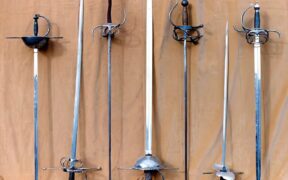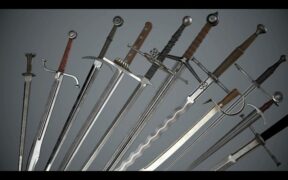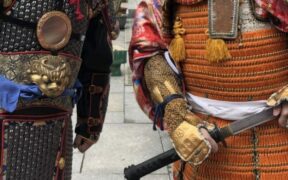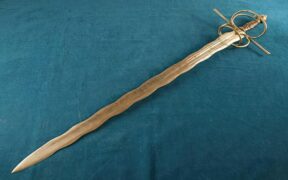Our content features commercial links to our products, committed to transparent, unbiased, and informed editorial recommendations. Learn More
Spanish Sword Types that Conquered both the East and the West
NO AI USED This Article has been written and edited by our team with no help of the AI
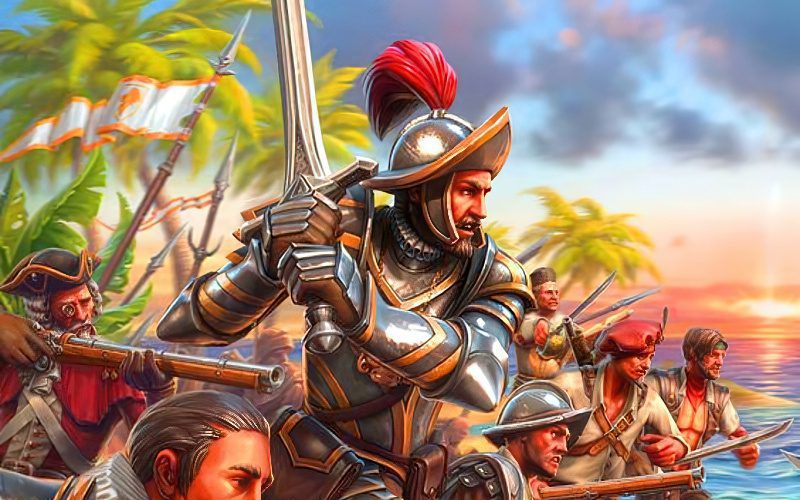
The Spanish swords were bladed weapons that were used in the Iberian Peninsula. Some of these swords were so effective that they spread quickly around the world. in addition to conquering many places, they are also well-known for their use in fencing.
In this article, we shall discuss the many swords that came from these regions. We shall start with the famous ancient swords like the Roman Gladius. Then we will explore the sparring long swords and finish up with the Conquistador swords. Finally, you will learn about the many uses of Spanish swords and their ancient history.
Falcata

The Iberian peninsula, where modern-day Spain and Portugal are located, is the primary location where the ancient sword known as the Falcata was discovered. It is a weapon that was used even during pre-Roman times and would significantly impact the armament that the Romans would develop in the future.
This particular kind of sword was carried by both Iberian foot troops and cavalry in the ancient world of Spain for hundreds of years. It has a well-deserved reputation for its ability to slice through various materials easily.
The Romans knew that the quality of armor available at the time meant that even a helmet might not withstand a strong blow from a falcata delivered from horseback. This power came from its strong curve, heavyweight, and short size of 24.5 inches (60 cm).
Gladius Hispaniensis

Although some could debate whether it was really Spanish or Roman, the fact cannot be denied that it was first used by the Iberian tribes located in modern-day Spain. During and after the Punic Wars, it became the primary sword of the Roman legionnaires from the 2nd century BC forward.
The reason why it became so popular is because of its comparatively short and double-edged blade, which made it perfect for cutting and thrusting in tight areas of hand-to-hand fighting on the ancient battlefield. This proved to be deadly when combined with tactics and coordination to defeat the long walls of spears.
These Gladius swords were used to expand the whole territory of Rome across 3 continents. The Gladius Hispaniensis was the first blade size that spanned from 16 to 27 inches long (42 to 70 cm). This Spanish sword, the Gladius, is definitely the most popular sword known today.
Pugio
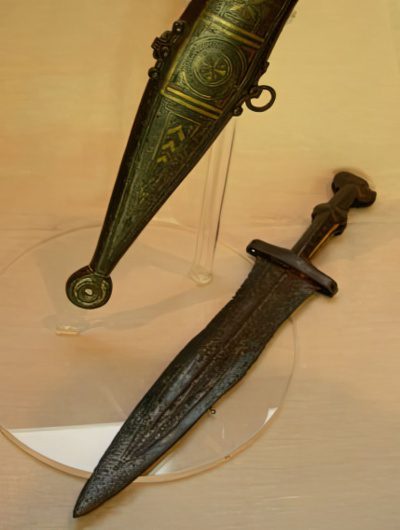
This very popular small sword used by the Romans originally came from modern-day Spain or Iberia from the Cantabrian people.
The first models featured a much larger blade than the usual length it was known for. Like the Gladius, it saw a lot of usage throughout the ancient world. This Spanish sword was also used to kill the famous Roman Emperor, Julius Caesar. He was stabbed to death by Roman Senators, some he considered to be his friends.
The longest length of this old Spanish short sword is 11 inches (28 cm), which places it squarely in a category reserved for daggers.
Spanish Arming Sword
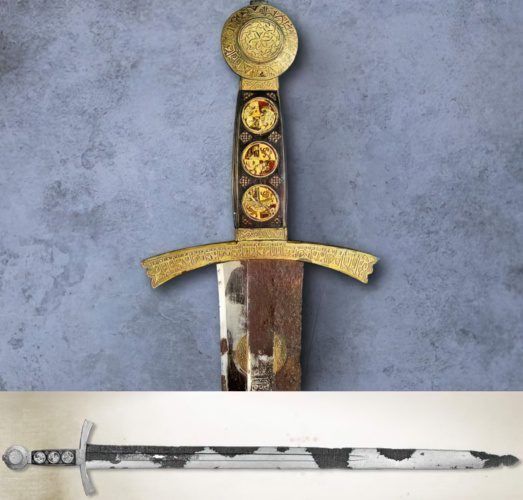
Just like the crossguard was popular in other regions of the world, the Spanish arming sword often featured a crossguard as well. These swords were influenced by the shape of Viking swords and, when combined with the Toledo steel, were very powerful.
There are some great examples of these Spanish arming swords that were used during the time of the Spanish Reconquista. Here are some examples of Spanish arming swords from that time that we have recovered today.
Lobera

Saint Ferdinand III (1217–1230), king of Castile and king of León, ruled with the Spanish sword Lobera. He finished what his grandfather, Alfonso VIII of Castile, had started and was very successful during the Reconquista because of Spanish swords.
This knightly Spanish sword is around 35 inches (90 cm long) and was made in Spain. Today its kept as a relic of significant importance.
Colada & Tizona
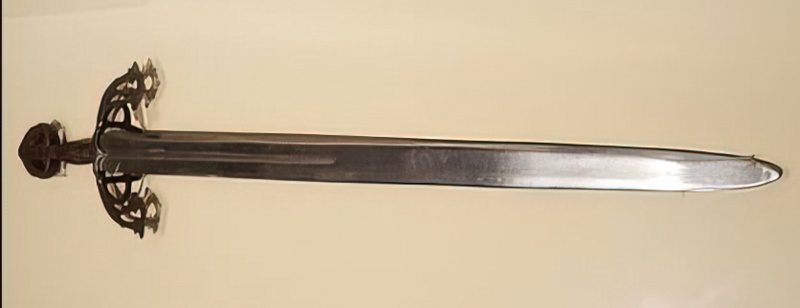
The Colada, or Tizona sword, is the legendary sword that El Cid used in the Middle Ages. It can also be found in the Poem of Cid. El Cid is the legendary Castillian war hero that fought with both Christians and Muslims.
This was a sword that was used in the 11th century and was forged in the shape of an Arming sword. The latter hilt and guard were most likely added in the 16th century. It has a total length of 37 inches (95 cm) which is also similar to other arming swords from the time.
It’s important to note that El Cid’s sword is called “Tizona” sword in the museum. The name “Colada” could have come from popular culture, since epic poems at the time told stories that were based on folklore and not on historical facts.
Side Sword

The thin and long Rapier is the predecessor of the Side sword, whereas the Knightly sword is the successor of the Side sword. The phrase “Sada da Lato” (Italian) or “Espada Ropera” (Spanish) is the most common name for this weapon. It saw extensive use throughout the medieval and Renaissance eras.
Fencing also used the side sword; some might even say that this was the original fencing sword. This popular blade is often used in one-on-one duels, despite being outclassed by later rapiers.
It was called the side sword because it would be carried around the belts of ordinary people of Spain, and it had a distinctive dueling guard because it was commonly used in duels. This 16th-century Spanish sword has an overall length of 31 to 39 inches (80 to 100 cm) long and is very easy to use.
Rapier
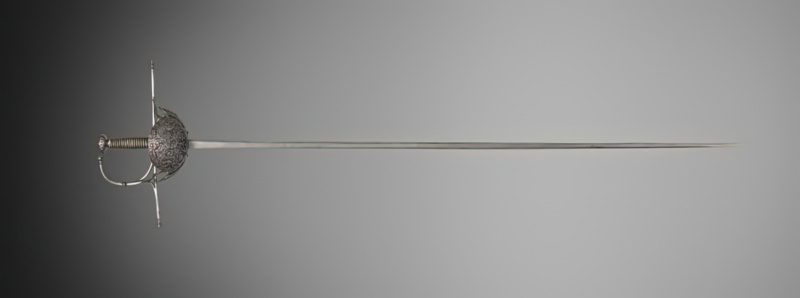
The rapier is what the Spanish used and still use for fencing under the name of Destreza, which translates directly to dexterity. It was the fencing sword during the 17th century and was sometimes used in battle because of its ability to outclass a normal sword in the hands of a skilled combatant.
Known for its long, thin blade, the rapier was used by Spanish civilians in the sixteenth and seventeenth centuries. However, as time passed, it became increasingly linked with courts, duels, and fashion. The most common types of rapiers were probably ones with a swept hilt or a cup hilt, but there are many other types as well that could have been used.
It has an overall size of 45 to 53 inches (115 to 135 cm) and a very flexible and bendy steel blade that could be used for deadly thrusting strikes. Because of its lightweight, it could be used as a one-handed sword, with a buckler, or even with a dagger called a maingauche.
Spanish Conquistador Swords

Unlike what some people would be led to believe, there is no such thing as a conquistador sword. Some people think that special types of swords were created for the Conquistadors on their journey to America.
The Conquistadors were explorers, or mercenaries as some would call them, that explored the American continents. The swords that they used the most were the longsword, broadsword, rapier, and side sword.
That makes the Spanish rapier and side sword the Conquistador swords. Both of these weapons proved deadly in combat against the Native Americans, especially when using European arms and armor made of steel from Toledo, Spain.
Cutlass

Due to the success of the conquistadors, Spain had to become a ruler of the seas, which meant that they needed to have a sword for the Spanish Armada, also known as the Spanish Navy. The sword that proved deadliest in close-quarter combat on the seas was the Cutlass.
The Cutlass was a sword that was used by Spanish sailors to battle against different nations or pirates known as buccaneers that harassed Spanish ships constantly.
This shortsword can come in many different shapes and sizes with a guard that is sometimes opened or closed. The overall length is around 27 inches (70 cm) which makes it a perfect one-handed weapon when fighting in the middle of the ocean.
Uses for the Spanish Swords

Sometimes these swords that came from Spain were called Toledo swords. The reason behind this is the beauty of the craft that came from the forging process and steel in the town of Toledo. Spaniards used everything from crossbows, halberds, rifles, and cannons, but their swords were never forgotten all throughout history.
Warfare
The biggest use of the Spanish swords is, of course, for warfare. Spain has been in quite a few wars throughout its history, and swords were used in lots of them up until recently.
Everything from the Iberian Gladius spreading around the globe to the Spanish arming sword creating folklore tales about legendary battles to the conquest of the Americas with the conquistadors – Spanish swords were used throughout history.
Ceremonial
The high nobility often had handcrafted Toledo swords made for themselves that were for either brutal warfare or knightly and merciful acts.
It goes without saying that these swords had a lot of meaning for all ceremonial activities in Spain. They were meant to represent authority and nobility. Even today, these swords can carry a sort of air around them that smells of royalty.
Martial Arts & Fencing
La Verdadera Destreza is a Spanish word that describes the art of both sword fighting and fencing. Today there are many Historical European Martial Arts (HEMA) events taking place around the world where Spanish swords are used by lots of combatants.
The rapier sword is especially popular at HEMA events because of its very unique look and feel.
Decorative & LARP
In modern times, the best use for Spanish-bladed weapons is for decorative purposes. Having one mounted on the wall would make for the perfect home decor for every sword enthusiast out there.
Other than that, there are many Spanish swords on the market that one could obtain for use in LARP activities. The gladius and rapier are especially popular in these types of events.
History of the Spanish Swords
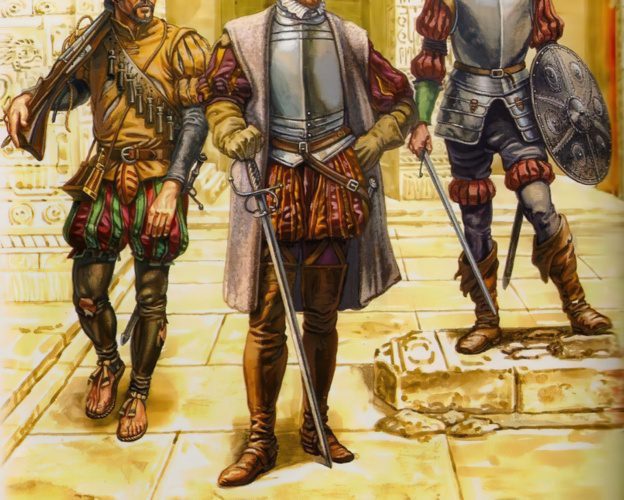
Spanish swordcraft is very well known today, but its history and long and can date back all the way back to over 2000 years ago. They’re known for their superior crafting of metal, which some say is due to the Tagus water that was brought there.
For many generations, the city of Toledo, located in the heart of Spain, has been known as the epicenter for the forging of Spanish swords.
The history of weapons in the city stretches back to the days of the Roman Empire when the emperors favored blades manufactured in Toledo because of their superior durability and craftsmanship. Some would go as far as saying that Toledo steel is the reason behind the Romans’ success. Some might even say that it is far superior to the Tamahagane steel used for the Japanese Katana.
If you are a fan or enthusiast of Spanish swords, this town still holds the title of best steel today, and you can check it out anytime you want.
Were Spanish Cloaks banned because of Spanish Swords?
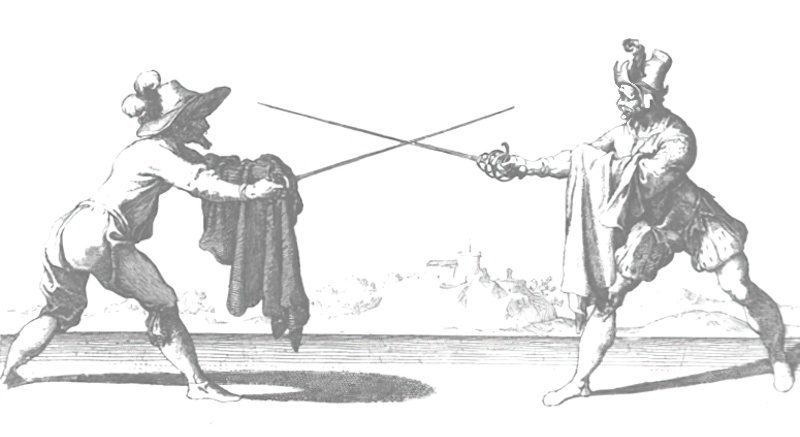
This is a common question that is often asked because of the cloaks and capes that were used in Spain, often along with various types of Spanish swords.
When the government of the 18th century tried to outlaw long cloaks and wide-brimmed hats, their primary concern was not people carrying weapons but rather people concealing themselves, or their identities. At that time, it was generally allowed for a Spanish citizen to carry a sword; the government was more concerned with ensuring that everyone was identifiable.
People used to engage in “embozado,” which is an old Spanish meaning of disguise. They masked the top portion of their heads with the broad brim of their hats and the bottom portion of their faces with the folds of their jackets. This was something that the government did not approve of, which is why they attempted to legislate wearing tricorn hats and shorter cloaks.
Conclusion
Although very popular today because of their fencing and sparring usage, Spanish swords might just be one of the most important swords in history because of their ability for territorial conquest. Today they are very respected and play a very big role in Spanish history.
